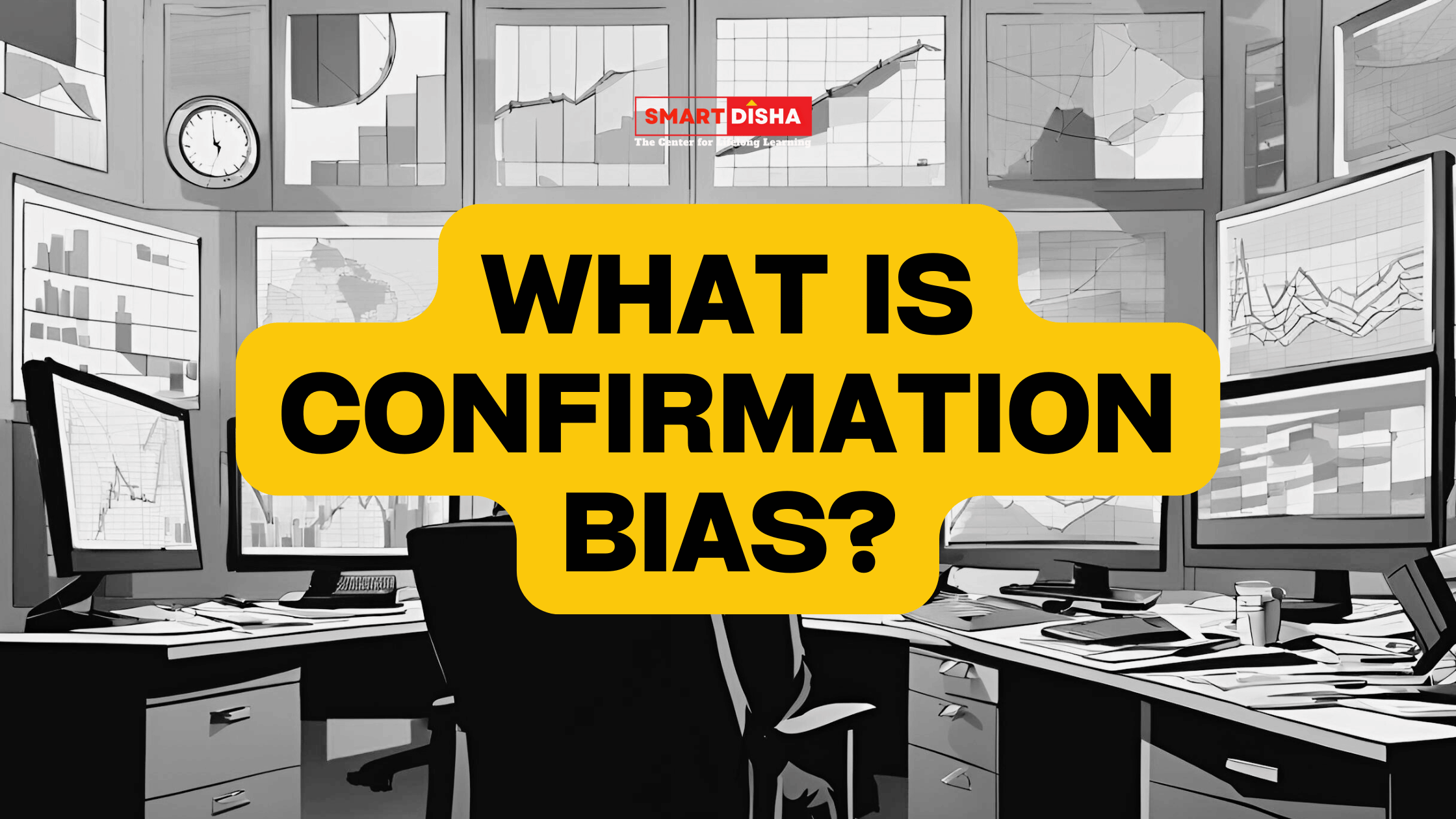Investors rely heavily on research and analysis to make informed decisions in the stock market. However, even the most experienced investors can fall victim to cognitive biases that distort their judgment. One of the most prevalent of these biases is confirmation bias—the tendency to seek out, interpret, and remember information that confirms one’s preexisting beliefs or expectations while ignoring evidence to the contrary.
In this article, we’ll explore how confirmation bias affects stock analysis, how it can lead to costly investment mistakes, and what strategies you can adopt to avoid it.
What is Confirmation Bias?
Confirmation bias is a psychological phenomenon where individuals favor information that aligns with their beliefs and discount information that contradicts them. In the context of stock analysis, this bias can manifest when investors selectively focus on positive news or data points that support their belief in a stock’s potential while disregarding negative information or risks.
For example, if an investor believes that a particular tech company is poised for growth, they may only pay attention to news about rising sales or new product launches, while ignoring signs of declining profit margins or regulatory risks. This selective attention can lead to skewed analysis and poor decision-making.
How Confirmation Bias Affects Stock Analysis
Confirmation bias can have several negative effects on stock analysis, including distorting how investors perceive data, leading them to overlook critical warning signs, and ultimately resulting in suboptimal investment decisions. Here are some common ways it manifests in stock analysis:
1. Ignoring Negative News
- Description: Investors influenced by confirmation bias may downplay or ignore negative news about a stock or sector. Instead of adjusting their analysis based on new information, they may cling to their initial positive outlook.
- Impact: By ignoring warning signs such as declining earnings, market share losses, or management issues, investors may continue to hold or even buy more of a stock that’s headed for trouble.
2. Cherry-Picking Data
- Description: Investors may selectively choose data points that support their hypothesis while ignoring evidence that contradicts it. For instance, they might focus on a stock’s revenue growth while ignoring growing debt or declining profit margins.
- Impact: This selective analysis creates a skewed view of the stock’s true value and potential risks, leading to an overvaluation and misguided confidence in the investment.
3. Overconfidence in Personal Predictions
- Description: When investors form strong opinions about a stock, confirmation bias can cause them to become overconfident in their analysis, believing that their initial research is correct, despite new evidence to the contrary.
- Impact: Overconfidence fueled by confirmation bias can lead investors to make riskier bets, hold onto losing stocks longer than they should, or miss opportunities for diversification.
4. Reinforcing Echo Chambers
- Description: Investors often turn to sources—such as financial news, stock analysis forums, or social media—that confirm their existing beliefs about a stock. These sources can create an “echo chamber,” where only supportive opinions are amplified.
- Impact: This constant reinforcement of positive beliefs can prevent investors from hearing alternative perspectives, leading to one-sided analysis and a failure to fully assess potential risks.
Real-World Example: Confirmation Bias in Action
1. Enron Scandal (Early 2000s)
- What Happened: Before its collapse, Enron was one of the most favored stocks on Wall Street, with strong earnings reports and aggressive growth strategies. Many investors believed in the company’s continued success, despite growing signs of financial mismanagement and corporate fraud.
- Impact: Confirmation bias caused many analysts and investors to overlook or rationalize the warning signs, resulting in significant financial losses when the company eventually went bankrupt.
2. Tech Stock Bubble (Late 1990s)
- What Happened: During the dot-com boom, investors were highly optimistic about internet companies, often focusing only on growth potential without considering profitability or sustainable business models.
- Impact: Investors dismissed or ignored warnings about overvaluation, leading to massive losses when the bubble burst and many of these companies failed.
How to Avoid Confirmation Bias in Stock Analysis
While it’s impossible to eliminate cognitive biases entirely, investors can take steps to mitigate the effects of confirmation bias and improve the objectivity of their stock analysis:
1. Actively Seek Contradictory Information
- Tip: Make a conscious effort to seek out information that challenges your investment thesis. Look for negative news, alternative opinions, and bearish analysis to gain a balanced perspective on a stock.
- Why It Works: Challenging your own assumptions can help you identify potential risks and avoid overconfidence in your analysis.
2. Use Quantitative Data Over Qualitative Opinions
- Tip: Focus on hard data, such as financial statements, key performance indicators (KPIs), and historical stock performance, rather than relying on subjective opinions or predictions from analysts or news sources.
- Why It Works: Objective data provides a more accurate picture of a company’s financial health and future prospects than qualitative opinions, which are often influenced by biases.
3. Set Clear Investment Criteria
- Tip: Define specific criteria for investing in or selling a stock, such as price-to-earnings (P/E) ratios, revenue growth, or debt levels. Stick to these criteria rather than letting emotions or news headlines guide your decisions.
- Why It Works: Having predetermined criteria helps you remain disciplined and prevents emotions from overriding sound analysis.
4. Diversify Your Information Sources
- Tip: Use multiple, varied sources of information for your stock analysis, including financial news, analyst reports, and independent research. Avoid relying on a single source or echo chamber.
- Why It Works: A diverse range of opinions and data points reduces the likelihood of becoming trapped in confirmation bias and gives you a more well-rounded view of the stock.
5. Perform Regular Portfolio Reviews
- Tip: Regularly review your portfolio and reassess the reasons you invested in each stock. Ask yourself if the fundamentals still support your initial thesis, or if new information suggests a change in strategy.
- Why It Works: Regular reviews help you stay objective and adjust your strategy based on changing market conditions and company performance, rather than sticking to outdated assumptions.
Conclusion: Staying Objective in Stock Analysis
Confirmation bias can be a significant barrier to effective stock analysis, leading investors to make decisions based on selective information and personal beliefs. By recognizing this bias and actively working to counteract it, investors can improve their analysis, avoid costly mistakes, and make more informed decisions.
Successful investing requires a commitment to objectivity, discipline, and a willingness to challenge your own assumptions. By adopting strategies like seeking out contradictory information, using hard data, and diversifying your sources, you can minimize the impact of confirmation bias and enhance your investment decision-making.




